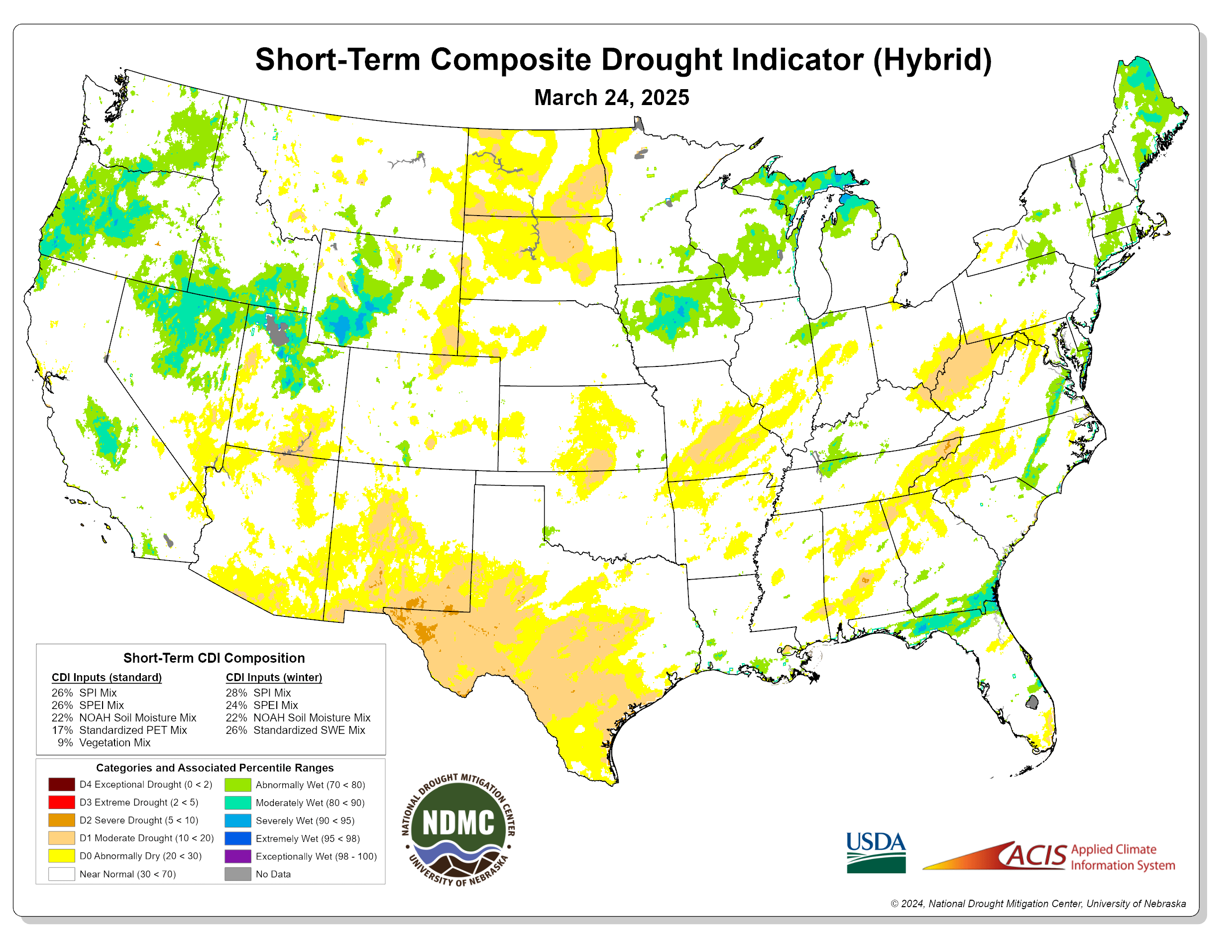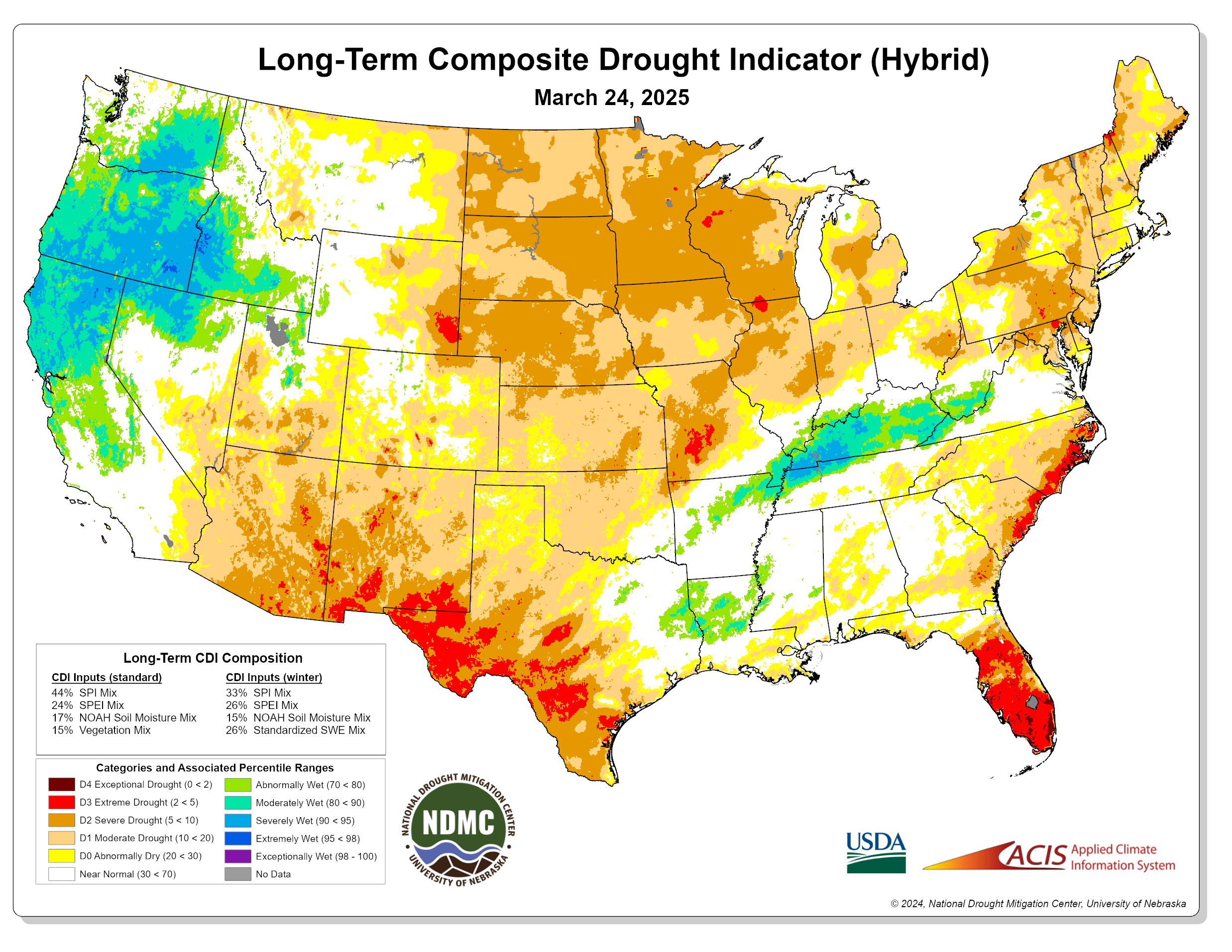Short-Term Percentiles
The Short-Term Composite Drought Indicator Percentiles map approximates drought-related impacts that respond to precipitation (and secondarily other factors) on time scales ranging from a few days to a few months, such as wildfire danger, non-irrigated agriculture, topsoil moisture, range and pasture conditions, and unregulated streamflows.

Long-Term Percentiles
The Long-Term Composite Drought Indicator Percentiles map approximates drought-related impacts that respond to precipitation on time scales ranging from several months to a few years, such as reservoir stores, irrigated agriculture, groundwater levels, and well water depth.

These maps are produced weekly by the National Drought Mitigation Center.